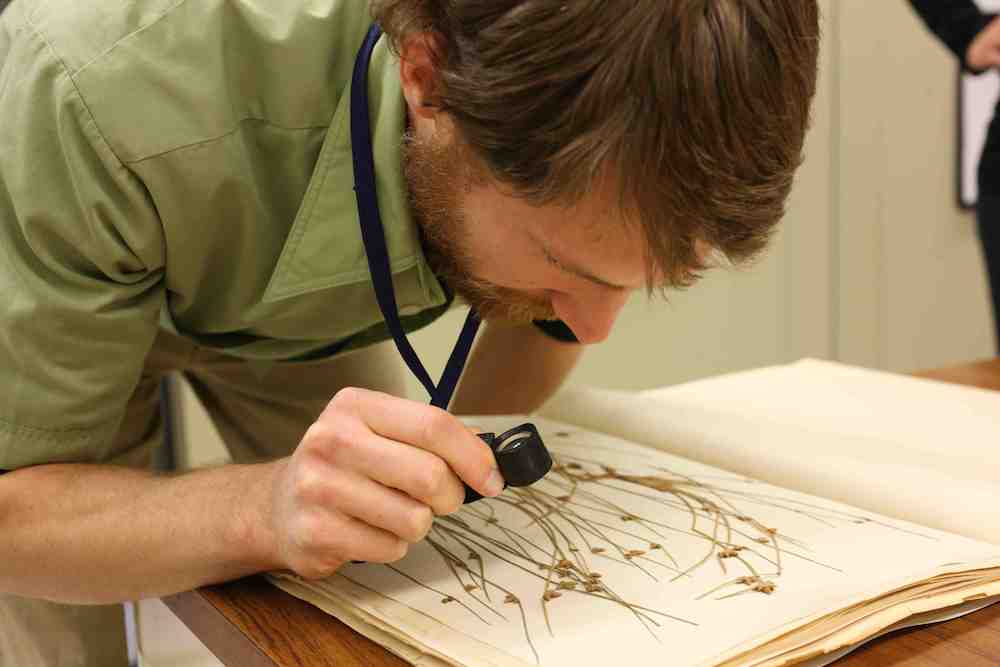Specimen Comparison
Specimen comparison is the process of taking a field-collected plant and comparing it to known, identified, and verified plants. Where do you find a collection of these type of plants? These collections of plants are found in natural history collections called herbaria. An herbarium is a massive warehouse of plant biodiversity. In large herbaria such as the U.S. National Herbarium at the Smithsonian, you will find examples of plants from all over the world. Small regional herbaria will house local plants from a specific region. These plants can be used to help study plant variation, diversity, and evolution. Plants from herbaria have been integral parts of research on cancer drugs, virus transmission, invasive species, and climate change.
Plant specimens found in an herbarium have been meticulously collected, pressed to show key diagnostic morphological features, and mounted specially on archival quality paper. Properly cared for herbarium specimens last for hundreds of years. To provide some context, herbarium plant specimens are preserved from the Lewis and Clark expedition! Each herbarium plant specimen is accompanied by a descriptive label that includes information on the plant name (both Latin and common), the family the plant belongs to, the name of the person who first described the plant (authority), the location and date the specimen was collected, some information about the habitat where the plant was found, and the person who collected the plant. Often the specimen will also have annotation labels. Annotation labels are labels applied to the specimen after it has been included in the collection. These labels indicate another researcher has examined the specimen and verified or questioned the identity. You can image how a well-preserved herbarium specimen with lots of annotation labels is a very good resource on a plant’s identity!
Since literally millions of plant specimens can be housed in an herbarium, you cannot just start randomly searching through the specimens hoping to find your specific plant. First you have to narrow your search to family and genus. Sometimes you can narrow your search to a couple of species. Once you do this, you pull the specimens from where they have been carefully filled and examine them relative to the specimen you bring from the field. Careful examination, combined with taxonomic keys, written descriptions, and image comparison are critical in plant identification.
